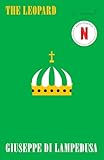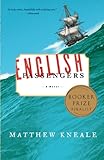

 It’s always hard for me to choose the best book I’ve read in any given year, since I read constantly, if slowly, like a tortoise. This past year I’ve read mostly novels, although I often read history, biography, lay science, memoir, and poetry, as well. As the season wanes, I like to look back over my list, however paltry it may be (the tortoise effect). This year’s included Matthew Kneale’s wonderful historical novel English Passengers; Kazuo Ishiguro’s quite perfect The Remains of the Day; Lampedusa’s masterful tale of fading aristocracy, The Leopard; Giles Waterfield’s eerie story of war in Europe, The Long Afternoon; a fabulous work of history, The Discovery of France, by Graham Robb; and Jane Austen’s Emma (how did I miss this one during my previous forty-three years?).
It’s always hard for me to choose the best book I’ve read in any given year, since I read constantly, if slowly, like a tortoise. This past year I’ve read mostly novels, although I often read history, biography, lay science, memoir, and poetry, as well. As the season wanes, I like to look back over my list, however paltry it may be (the tortoise effect). This year’s included Matthew Kneale’s wonderful historical novel English Passengers; Kazuo Ishiguro’s quite perfect The Remains of the Day; Lampedusa’s masterful tale of fading aristocracy, The Leopard; Giles Waterfield’s eerie story of war in Europe, The Long Afternoon; a fabulous work of history, The Discovery of France, by Graham Robb; and Jane Austen’s Emma (how did I miss this one during my previous forty-three years?).
 But the book that really marks 2009 for me is one I probably should have read long before and will probably read at least once again, life permitting: A Tale of Two Cities by, of course, Charles Dickens.
But the book that really marks 2009 for me is one I probably should have read long before and will probably read at least once again, life permitting: A Tale of Two Cities by, of course, Charles Dickens.
A Tale of Two Cities is one of those books so famous that it has come to seem more title than actual book, like Frankenstein, Dracula, Moby Dick, War and Peace. Wikipedia tells us that it is the “most printed original English book.” It contains one of the three or four most famous first lines in the English language: “It was the best of times, it was the worst of times…” I remember that when I was about thirteen, my father was talking about first lines and he said, “What if you reversed that? ‘It was the worst of times, it was the best of times.’ Doesn’t work at all, does it?” And my uncle, also literary, liked to quote the last line of the book, in a mock-epic voice: “It is a far, far better thing I do, than I have ever done…” Clearly, it was high time for me to find out what lay between those two galloping old warhorses.
A Tale of Two Cities contains all the hallmarks of the Victorian tearjerker: it is sentimental, cloyingly pious, full of terribly convenient and eventually predictable coincidences, laden with long sentences, self-sacrificing Angel-in-the-House female leads, political caricatures, and grotesque minor characters. I was riveted from the first–or, perhaps, the second–sentence–and I wept over the last.
Unfortunately, I can’t tell you much about the story, in case you’ve waited as long as I to read it, because the plot is so intricately suspenseful that almost anything I describe about it will give too much away.
Suffice it to say that it is not only an extraordinary piece of storytelling but also a remarkable piece of historical fiction–eighty years after the French Revolution and the Reign of Terror, Dickens imagined not simply the large machineries of social injustice and mob fury but also the very essence of everyday life under duress, the things that make history real to a reader–the rough wool fabric of a red cap, the color of the mud on a man’s shoes, the staring eyes of a stone figure on a chateau wall, the murdering women with blood on their skirt hems going home to their Paris quarter to feed the children, the tree from which a guillotine was made. Please do not wait as long as I did.
For the ultimate experience, hear it as I did, too: as a Recorded Books AudioBook (available at your public library), read by the incomparable Frank Muller (originally a Shakespearian stage actor).
Dickens was made to be read aloud, by fireplace and coal stove, lantern and gaslight, and A Tale of Two Cities is even better in this form than on the printed page.








